In a recent email, a Protestant inquirer, investigating the claims of Orthodoxy and Roman Catholicism, brought up Isaiah chapter 22 which seems to support the Roman Catholic papacy. He wrote:
I feel drawn to Catholicism again. However, I will remain realistic about Catholicism’s current situation and crisis: post-Vatican II Catholicism is a mess. While I sympathize with the traditionalists, I don’t wish to affiliate myself with a radical fringe of zealots who appear at times to lack the central Catholic virtue of charity. However, I simply can’t explain away the papacy. Although your explanation of the “Rock” passage was quite convincing, the Latins would claim that whether or not the rock refers to Peter’s confession or his personage, the promise of the keys of the kingdom established a monarchical papacy centered around the Petrine see of Rome. They claim that this imagery also bears an unmistakable connotation of authority and the office of vicarship and they highlight the similarities between the passage in the Gospel of St. Matthew and the book of Isaiah, chapter 22. (Emphasis added.)
My Response
Jesus’ Promise to Peter
In Matthew 16, one of the more important passages in the Bible, Peter makes the confession that Jesus is the Christ, the long awaited Messiah. In response, Jesus declares him blessed, gives him a new name “Peter,” and bestows on him the power of the keys.
18 And I tell you that you are Peter, and on this rock I will build my church, and the gates of Hades will not overcome it. 19 I will give you the keys of the kingdom of heaven; whatever you bind on earth will be bound in heaven, and whatever you loose on earth will be loosed in heaven.” (Matthew 16:18-19; NIV, emphasis added.)
This passage has been one of the most highly contested in the Bible. Roman Catholic apologists have used it to assert papal supremacy, and Protestants have responded with counter-arguments. One longstanding issue was what Jesus intended when he bestowed on Simon the new name “Peter” and what he meant when he declared that upon “this rock” he (Christ) would build his church. More recently, the keys have become a matter of debate.
Scott Hahn’s Discovery
One of the challenges of understanding Jesus’ promise to give Peter the “keys of the kingdom of heaven” (τὰς κλεῖδας τῆς βασιλείας τῶν οὐρανῶν) is what exactly the keys referred to. Scott Hahn argues that Isaiah 22 gives an important clue for understanding Christ’s promise to Peter in Matthew 16.
20 In that day I will summon my servant, Eliakim son of Hilkiah. 21 I will clothe him with your robe and fasten your sash around him and hand your authority over to him. He will be a father to those who live in Jerusalem and to the people of Judah. 22 I will place on his shoulder the key to the house of David; what he opens no one can shut, and what he shuts no one can open. (Isaiah 22:20-22; NIV, emphasis added.)
For Scott Hahn, Christ giving Peter the keys was comparable to the king bestowing the keys on his vizier. The vizier in ancient Israel was the second in command much like the way in today’s White House the second most important person is the Chief of Staff, not the Vice President. Because only one vizier serves the king Hahn proceeded to reason that this supports the monarchical understanding of the papacy.
Isaiah 22 in the Historical Context
The prophetic oracle in Isaiah 22 was given to two viziers to King Hezekiah: Shebna (v. 15) and Eliakim (v. 20). For both men the message is one of judgment: Shebna will be thrown away (v. 17) and Eliakim will be like a peg in the wall sheared off (v. 25). For more historical background on the two men and their relationship to King Hezekiah, one should read Isaiah 36-37 and 2 Kings 18.
Being clothed with a robe and sash, and given a chariot were part of the ceremonial vesting of the vizier before he took office. A similar vesting ceremony can be found in Genesis 41:41-43 in which Pharaoh gave Joseph his signet ring, dressed him in fine linen, put a gold chain around his neck, and gave him a chariot to ride in. No mention of a key is made but the similarities are clear. A similar vesting ceremony is hinted at in the book of Esther (Esther 3:1, 6:7-10, 8:2, 10:3). Mention is made of a royal robe, a chariot, and a signet ring, but not of a key. Thus, a comparative analysis of ancient Near Eastern political practices from Egypt during the Hyksos pharaohs 1720 to 1550 BC, the Judaean kingdom circa 700 BC, to the Persian kingdom circa 400 BC shows common elements in the installation of the vizier but the bestowal of a key seems to be a practice confined to Israel. The phrase – what he opens no one can shut, and what he shuts no one can open – is a poetic way of saying that as vizier Eliakim would have the final say, that is, no one could reverse his decisions.
What do the Keys Refer to?
The paucity of references to “keys” in the Bible makes for a challenging exegetical question. There are two Old Testament references: Isaiah 22:22 and Judges 3:25. There are six New Testament references: Matthew 16:19, Luke 11:52, and Revelation 1:18, 3:7, 9:1, and 20:1. The word “key” has a range of meaning. Judges 3:25 refers to a literal, physical key to the Moabite king Eglon’s private chamber. In Luke 11:52 Jesus used “key to knowledge” to refer to the Jewish rabbis’ teaching authority, i.e., to interpret and apply the Torah. Key can refer to power over something, e.g., Jesus’ victory over death and Hades (Revelation 1:18), an angel having the power to open the Abyss (Revelation 9:1), and Archangel Michael named as the angel having the key to the Abyss (Revelation 20:1).
Do Isaiah 22 and Matthew 16 Line Up?
The validity of Scott Hahn’s pro-papacy apologia rest on the two passages being parallel to each other. But do they line up? A closer examination shows that while there are some parallels between the two, there also exist divergences. Christ’s promise to Peter has two elements:
- The keys of the kingdom of heaven, and
- The power to forgive sins.
Isaiah’s prophecy to Eliakim has two elements:
- The keys to the house of David, and
- The power to make final decisions.
The first element shows a rough similarity. The keys of the house of David bestowed on Eliakim in Isaiah 22 can be viewed as a prophetic type that is fulfilled when Christ bestowed the keys of the kingdom of heaven on Peter in Matthew 16. When we compare the second element, the power of the keys, we find a divergence. What Jesus gave to Peter was not so much administrative but priestly authority, the power to grant absolution. Scott Hahn can make a typological argument – the first element: the keys of the house of David are equivalent to the keys of the kingdom of heaven, but to assert that the second element: the power to open and close doors are equivalent to the power of binding and loosing is something of a stretch.
It should be noted that the Orthodox Study Bible (OSB) has a different reading for Isaiah 22:22:
I will give him the glory of David, and he shall rule, and no one will oppose him. (OSB)
This difference reflects the fact that where, for example, the New International Version (NIV) relies on the Hebrew Masoretic text, the OSB uses the Greek Septuagint. I checked my copy of the Septuagint found no mention of the Greek word for key (κλεὶς). For Orthodox Christians, this is worth noting as Orthodoxy gives the Greek Septuagint priority over the Hebrew Masoretic text. In other words, if Hahn were to apply Isaiah 22:22 from the Septuagint to Matthew 16:19 to justify the monarchical papacy, he wouldn’t have a leg to stand on.
Isaiah 22 Fulfilled in Revelation 3:7
The New Testament is the Old Testament fulfilled. Jesus claimed that he came to fulfill the Law and the Prophets (Matthew 5:17). So where do we find the New Testament fulfillment of Isaiah 22? I argue that the fulfillment of Isaiah 22:22 is found in Revelation 3:7. Let’s compare the two passages with bold fonts for the first element (the key) and italics for the second element (the power of the keys). Isaiah 22:22 reads:
I will place on his shoulder the key to the house of David; what he opens no one can shut, and what he shuts no one can open. (NIV)
Revelation 3:7 reads:
These are the words of him who is holy and true, who holds the key of David. What he opens no one can shut, and what he shuts no one can open. (NIV)
Where Matthew 16 provides a rough parallel to Isaiah 22, a much closer fit can be found in Revelation 3:7. The first and second elements in both passages parallel each other. So, if one wants to argue for a New Testament fulfillment of Isaiah 22 the best place to look is in Revelation 3, not in Matthew 16.
How does Isaiah 22 inform our reading of Revelation 3? The answer is simple and straightforward. Isaiah 22 provides some useful cultural information but nothing like a magic decoder ring. In Isaiah 22 the key was a symbol of authority and the language about shutting and opening meant having irreversible authority. So in Revelation 3:7, when Jesus says he holds the key of David he is asserting his being the Messiah who has supreme authority. The power of the keys can also refer to Christ’s sovereignty over history. The power of the keys in Revelation 3:7 lays the foundation to verse 8: “See, I have placed before you, an open door that no one can shut.” Jesus has given the church in Philadelphia an “open door,” an opportunity of some sort. This understanding of the power of the keys is much more straightforward than Scott Hahn’s convoluted attempt to make the keys stand for the monarchical papacy. What we have here is an attempt to force a round peg into a square hole. It can be done, but the peg is going be damaged in the process.
The Power of the Keys Given to the Apostles
In Matthew 16:19, Jesus noted that with the keys came the power to bind and to loose. “To bind and loose” is a rabbinic term for rabbis’ authority to declare things permitted or forbidden. Where in Judaism Moses was the Lawgiver and the Jewish rabbis had the authority to bind and loose members of the Jewish community, Jesus as the Inaugurator of the New Covenant bestowed covenantal authority upon his Disciples to “bind and loose” over the New Covenant Community – the Church. The Orthodox Study Bible notes for Matthew 18:18-20 has this to say about “binding and loosing”:
The authority to bind and loose sins is given to the apostles and transmitted to the bishops and presbyters they ordained. This authority is given for the sake of the salvation of the sinner. The sinner, “seeing that he is not only cast of out of the Church, but that the bond of his sin will remain in Heaven, he may turn and become gentle” (JohnChr). (Emphasis in original.)
Exegetical Red Herring
To focus on the word “key” detracts from the main thrust of Jesus’ promise to Peter, the power to bind and loose, i.e., the authority to absolve sins. The critical exegetical question here is whether the power to bind and loose that Christ bestowed on Peter in Matthew 16:19 was to one single person (which would support the monarchical model favored by Roman Catholics) or to the Twelve (which would support the conciliar model favored by Orthodoxy). If we ask whether the “you” in Matthew 16:19 is in the singular (σοι) or plural form (ὑμῖν), the answer is the former. So, if one makes “key” the focus of one’s investigation, then the evidence will point to the monarchical understanding. However, if we focus on the power to bind and loose, we find evidence of more than one person being granted this power. Matthew 18:17-18 shows the same power of binding and loosing given to a collective group. The pairing of binding “δήσῃς” and loosing “λύσῃς” in Matthew 16:19 have their parallel in Matthew 18:18: binding “δήσητε” and loosing “λύσητε.” Significantly, the two verbs in Matthew 18:18 are in the second person plural which supports the Orthodox conciliar understanding of ecclesial authority. The difference between the second person singular and plural is evident to one reading the King James Version which uses “thy,” “thee” and “thou” to indicate second person singular and “you,” “ye,” and “your” to indicate second person plural.
15 Moreover if thy brother shall trespass against thee, go and tell him his fault between thee and him alone: if he shall hear thee, thou hast gained thy brother. 16 But if he will not hear thee, then take with thee one or two more, that in the mouth of two or three witnesses every word may be established. 17 And if he shall neglect to hear them, tell it unto the church: but if he neglect to hear the church, let him be unto thee as an heathen man and a publican. 18 Verily I say unto you, Whatsoever ye shall bind on earth shall be bound in heaven: and whatsoever ye shall loose on earth shall be loosed in heaven. (KJV)
However, a reader of the NIV will not be able to spot the shifts in number due to the NIV’s usage of the modern “you” which includes both the singular and the plural under the same word form which necessitated my inserting [plural] into the excerpt below. [More recent NIV translations usage of gender inclusive language, e.g., “your brother and sister,” forced the translators to render “him” as “them” muddying the waters even further! Perhaps the NIV translators should consider using the Southern y’all in the next edition.]
15 If your brother sins against you, go and point out his fault, just between the two of you. If he listens to you, you have won him over. 16 But if he will not listen, take one or two others along, so that ‘every matter may be established by the testimony of two or three witnesses.’ 17 If he still refuses to listen to them, tell it to the church; and if he refuses to listen even to the church, treat him as you would a pagan or a tax collector. 18 I tell you the truth, whatever you [plural] bind on earth will be bound in heaven, and whatever you [plural] loose on earth will be loosed in heaven. (NIV)
Since Matthew’s Gospel was written for a Jewish audience it comes as no surprise that we find Jesus using the Hebraic expression of binding and loosing. This means that to locate similar passages elsewhere it helps not just to look for formal (word-for-word) equivalent but also for dynamic (meaning-for-meaning) equivalent. A parallel passage can be found in John’s Gospel in one of Jesus’ post-resurrection appearances. In John 20:21-23 we read:
21 Again Jesus said, “Peace be with you! As the Father has sent me, I am sending you.” 22 And with that he breathed on them and said, “Receive the Holy Spirit. 23 If you [plural] forgive anyone’s sins, their sins are forgiven; if you [plural] do not forgive them, they are not forgiven.”
Here Jesus is speaking not to Peter alone but to Peter and the Disciples. John, writing to a non-Jewish audience, refrained from using Hebraisms and instead has Jesus talking plainly about bestowing upon the Disciples the power to forgive sins. Kittel’s Theological Dictionary of the New Testament entry for κλεὶς (kleis) (vol. III pp. 752-753) likewise notes the parallel between Matthew 18:18 and John 20:23. What is important to note here is that John used the second person plural endings for the verb “forgive” (ἀφῆτε) in verse 23. One might expect that Jesus would bestow this authority exclusively to Peter but here he gives it to the Disciples. Jesus breathing on the Disciples indicates that the power to forgive sins is not so much a juridical power but more of a prophetic charisma that results from union with the Risen Christ. This charismatic and conciliar understanding of the power to “bind and loose” is much closer to Orthodoxy than to Roman Catholicism with its papal monarchy and legalistic ethos.
While it might be asserted, as Scott Hahn did, that the situation in Matthew 18:15-18 is like the king’s cabinet with the Prime Minister having the final say, this is projecting the modern parliament onto the ancient Church through reasoning by analogy. What is striking is what Scripture does not say: (1) in Matthew 16:19 Jesus did not give the power of the keys exclusively to Peter and (2) Jesus did not subordinate the authority of the Twelve to Peter in either Matthew 18:18 or John 20:23. This leaves Prof. Hahn’s Prime Minister/Cabinet analogy more a conjecture than a reasoned argument.
Furthermore, if the parliamentary model holds true then we would see Peter having the final say at the Jerusalem Council. However, it was James the bishop of Jerusalem who said: “It is my judgment” and instructing the Council “we should write to them.” (Acts 15:19-20) To argue that James was merely echoing Peter’s views is to argue from silence. Similarly, we would expect the First Ecumenical Council (Nicea I, 325) to have been presided over by the bishop of Rome or his representative. In fact, Nicea I was presided over by Emperor Constantine or Bishop Hosius of Cordova (Spain) (NPNF 2nd Series Vol. 14 p. xiii). Pope Sylvester had sent two legates to the Council, but they did not preside over it. To sum up, the empirical, historical evidence does not agree with the pro-papacy argument. One gets the sense that pro-papacy apologists are trying to force the messiness of church history into their neat model of the monarchical papacy.
Summary
The pro-papacy argument using Isaiah 22:22 to explain Matthew 16:19 would be persuasive if there exists a strong parallel between the two passages. However, the stronger parallel is in Revelation 3:7. Another weakness is that the pro-papacy argument focuses on the keys, not on the power that go with the keys. When we look at the power that comes with the keys we find a divergence. Where Matthew 16:19 refers to the power to bind and loose, Isaiah 22 refers to opening and closing doors. This means that the crucial cross-passage for Matthew 16:19 would be Matthew 18:18 in which Jesus spoke about the power to bind and loose, not Isaiah 22 which spoke of a different kind of power. In Matthew 18 Jesus used the second person plural to describe the power to bind and loose. This means that power of the keys that Jesus gave to Peter in Matthew 16:19 is given to the other Apostles as well in Matthew 18:18. This undercuts the argument for the Roman papacy and supports Orthodoxy’s conciliar understanding of the Church.
Matthew 18 has greater relevance for understanding Matthew 16 than Isaiah 22. The Isaiah 22 passage is much further removed in terms of time and genre, whereas Matthew 18 has the same source (Jesus) and is in the same book as Matthew 16. Matthew 18:18 can be seen as a follow up and expansion on Matthew 16:19. Scott Hahn’s pro-papacy argument derived from applying Isaiah 22 to Matthew 16 is to put it bluntly a stretch. It suffers from gaps in its logic (focusing on the similarity in the keys while ignoring the dissimilarity with respect to the power of the keys) and it fails to take into account two superior sources for understanding Matthew 16:19, Matthew 18:18 and John 20:23. To sum up, the attempt to prove a pro-papacy position through Isaiah 22 has serious flaws and therefore not convincing. While this article refutes the pro-papacy argument, it does not let Protestants off the hook. The power of the keys point to the bestowing of covenantal authority to the Church for the liturgy, sacraments like confession, and the bishops’ teaching authority. This bestowing of covenantal authority which began with the Twelve continues to the present day in the Orthodox Church through its episcopacy.
Protestants’ Vulnerability
The goal of this article has been to convince Protestants who take the Bible seriously and who feel compelled by Scott Hahn’s pro-papacy argument from Isaiah 22 that there is another way of reading Matthew 16:19 that is faithful to Scripture, consistent with church history, and does not rely on convoluted arguments. Many Protestants and Evangelicals know little about church history and have been brought up to uncritically accept anti-Catholic propaganda. This makes them vulnerable to Roman Catholic apologetics, especially with respect to the papacy. Former Protestants like Scott Hahn who know their Bible backwards and forwards, trained in theology, knowledgeable in church history, and well versed in patristics make formidable opponents. The challenge for Protestants is to develop a Protestant approach to the Petrine primacy that takes into account the biblical and historical evidences. As a former Protestant who earned his M.A. in church history from one of Evangelicalism’s leading seminary, I would say that doing this would be very difficult to pull off. However, there is an alternative to surrendering to the Roman papacy and that is to embrace Ancient Church that exists today in Orthodoxy. Orthodoxy recognizes the bishop of Rome as the first among equals but rejects the claim to papal supremacy. It affirms the conciliar nature of the Church but rejects the monarchical papacy.
Robert Arakaki
Recommended Reading
“Does Combining Isaiah 22 With Matthew 16 Lead Us To A Papacy?” Triablogue
“Scott Hahn on the Papacy” Catholic-Page
Kittel’s Theological Dictionary of the New Testament — κλεὶς (kleis) Vol. III pp. 744-753.
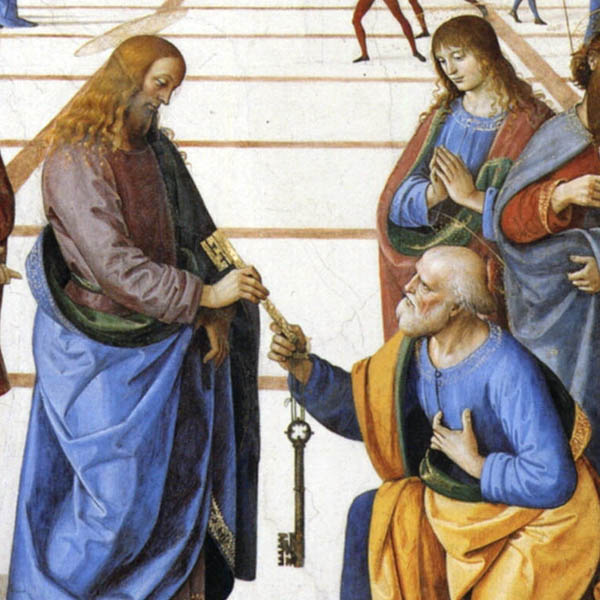
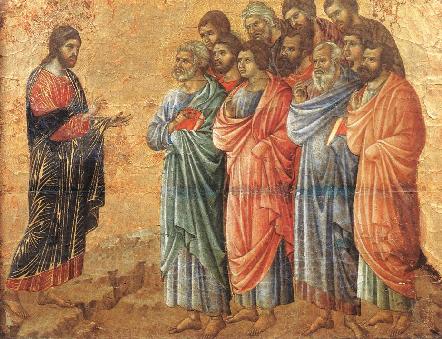

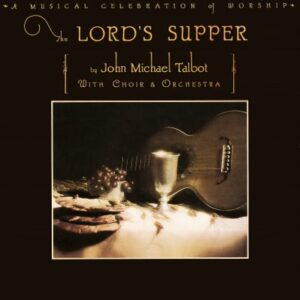

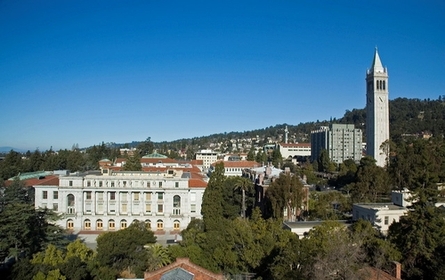
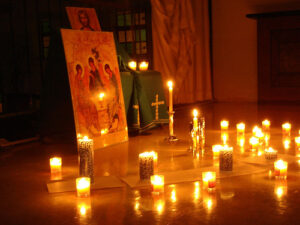



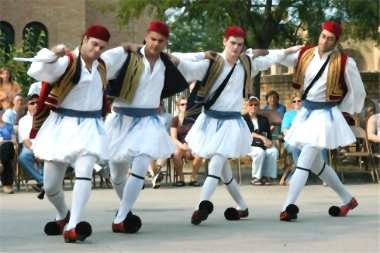
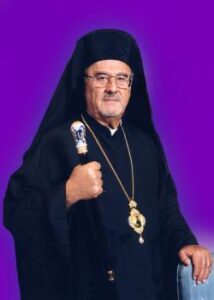
Recent Comments